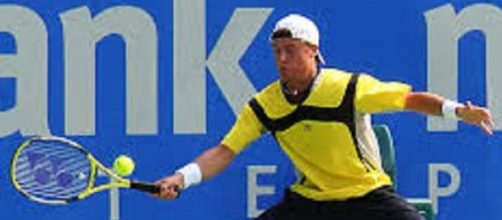In a glimpse of apossible future direction that the game of tennis could take to attract evenmore fans in to watch the product that they offer or maybe just as analternative format that tennis can take for some tournaments (especially in thedeveloping age-groups), “Fast4” represents an intriguing variation. Some haveeven posited that it may be the tennis equivalent to cricket’s highly lucrativeand popular Twenty20.
With that in mind twoof the world’s top players, one the elegant Swiss maestro Roger Federer, theother that gritty former Grand Slam winner and all-Australian hero LleytonHewitt, stepped on to court to showcase what the new format has to offer.
Itproved to be a fast and frenetic (and close) encounter, with Federer justgetting the upper hand in a shade over 90 minutes. His 4-3 (5-3), 2-4, 3-4(3-5), 4-0, 4-2 victory illustrated some of the differences between the gameand the normal tournament format.
Fast4 features thetweaking rather than the revolutionising of tennis that observers may behankering for on some occasions, with the removal of ‘advantages’, no need for ‘let’to be called, first man (or woman) to four games takes the set and tie-breaksslightly earlier than is the norm at three games apiece.
Some would argue thatto ensure that tennis can grab prime time slots in international broadcasters’schedules, a shorter and more predictable (time-wise) format is more likely toappeal.
Federer seemed to challenge that particular notion when consulted foran opinion afterwards, suggesting that one of the attractions of the sport ingeneral is “not knowing if you’re going to be on court for 45 minutes or threehours”. However, some viewers might not entirely agree with that viewpoint ifthey prefer more manageable chunks for their sporting enjoyment.
There would seem tobe even more similarities with cricket based on that viewpoint. The people whoenjoy the longer format that is Test Match cricket and frown on the perceived ‘vulgarity’with which Twenty20 blasts its way on to our screens, may have sympathy with thosewithin tennis who would not wish to change the drama of a potential five-setterand the emotions (and mood swings) that can engender.
Federer was inagreement though with trying out variations of the sport that may encouragehigher participation rates in kids in the future, as they battle to retainyoungsters that might be persuaded to move into alternative sports with moresuccinct formats. The players yesterday even sported headsets withmini-microphones attached at one stage during the evening’s entertainment, asthey allowed the Swiss player to play a short rally with a young Australian boyon the court. It may be a sign of things to come within the game or more likelyan entertaining amusement to supplement the existing exhibition events thatseveral of the elite players participate in during the year.

